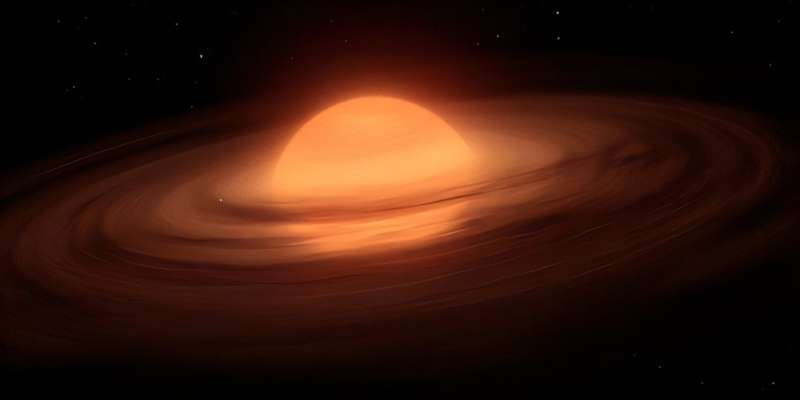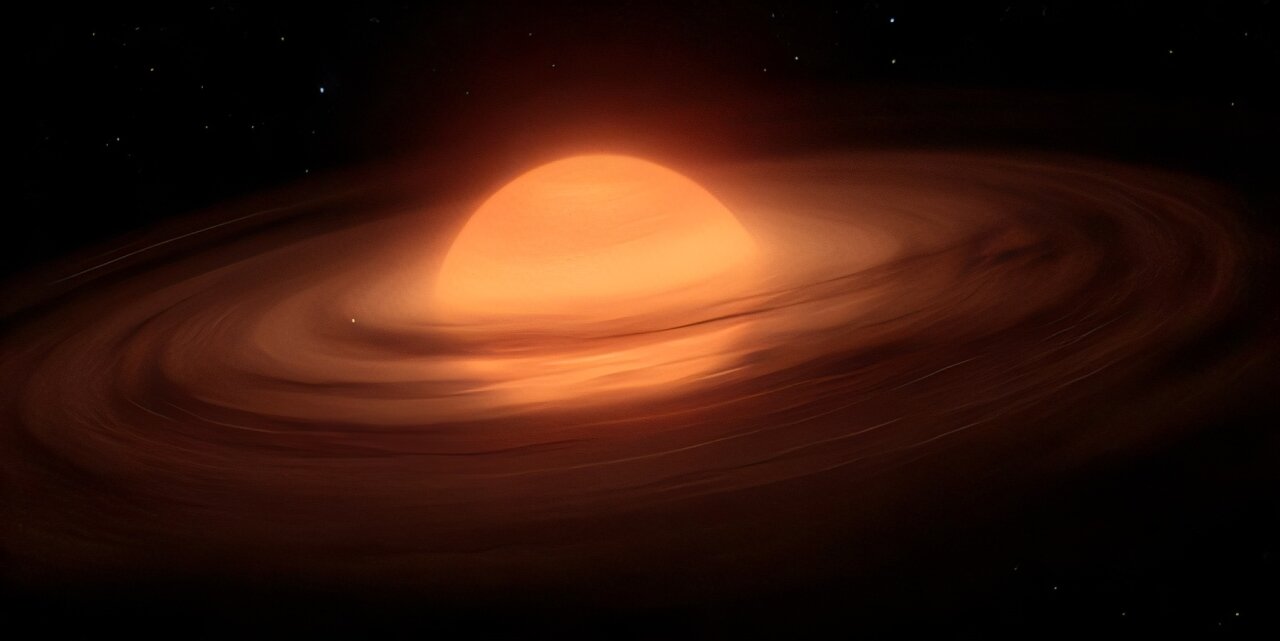
AI generated image of a young free floating planetary-mass object surrounded by a dusty disk. Credit: University of St Andrews
New research from the University of St Andrews has found that giant free floating planets have the potential to form their own miniature planetary systems without the need for a star.
In findings published on the arXiv preprint server, researchers using observations from the James Webb Space Telescope (JWST) investigated young isolated objects with masses of 5–10 times the mass of Jupiter. These objects are comparable to giant planets in their properties, but in contrast to giant planets, they are not in orbit around a star; instead they are free-floating in space.
Free floating planets are challenging to observe, as they are very dim and radiate mostly in the infrared. And yet, they hold the key to important questions in astrophysics. Current research suggests that these are the lowest mass objects formed like stars from the collapse of giant gas clouds.
In contrast to stars, they do not accumulate enough mass to start any fusion reactions in their cores. In theory, it is also possible that some of them form in a way comparable to planets, in orbit around a star, and later ejected from their planetary nurseries.
Researchers from the School of Physics and Astronomy along with co-authors from the U.S., Italy, Ireland, England and Portugal, observed eight of these objects, all very young, to learn more about their infancy. They used two instruments on board the James Webb Space Telescope, the largest space telescope ever built, equipped with extremely sensitive infrared instruments. Detailed spectroscopic observations for these objects, with unprecedented spectral coverage and sensitivity, from August to October 2024, were analyzed.
This new work characterizes these objects in depth, and confirms that they have masses around the same size as Jupiter. Six of them have excess emissions in the infrared caused by warm dust in their immediate vicinity. This is the characteristic sign of disks, flattened structures which are the birthplaces of planets.
Observations also show emission from silicate grains in the disks, with clear signs of dust growth and crystallization—the typical first steps in the formation of rocky planets. Silicate emission has been found for stars and brown dwarfs before, but this is the first detection in planetary-mass objects. This work builds on a previously published paper from the University of St Andrews showing that disks around free-floating planetary mass objects can last several million years, plenty of time to form planets.
Dr. Aleks Scholz, the Principal Investigator of the project, said, “Taken together, these studies show that objects with masses comparable to those of giant planets have the potential to form their own miniature planetary systems. Those systems could be like the solar system, just scaled down by a factor of 100 or more in mass and size. Whether or not such systems actually exist remains to be shown.”
Lead author Dr. Belinda Damian from the University of St Andrews, said, “These discoveries show that the building blocks for forming planets can be found even around objects that are barely larger than Jupiter and drifting alone in space. This means that the formation of planetary systems is not exclusive to stars but might also work around lonely starless worlds.”
More information:
Belinda Damian et al, Spectroscopy of Free-Floating Planetary-Mass Objects and their disks with JWST, arXiv (2025). DOI: 10.48550/arxiv.2507.05155
Journal information:
arXiv
Provided by
University of St Andrews
Citation:
Giant, free-floating planets may form their own planetary systems (2025, August 4)
retrieved 5 August 2025
from https://phys.org/news/2025-08-giant-free-planets-planetary.html
This document is subject to copyright. Apart from any fair dealing for the purpose of private study or research, no
part may be reproduced without the written permission. The content is provided for information purposes only.

